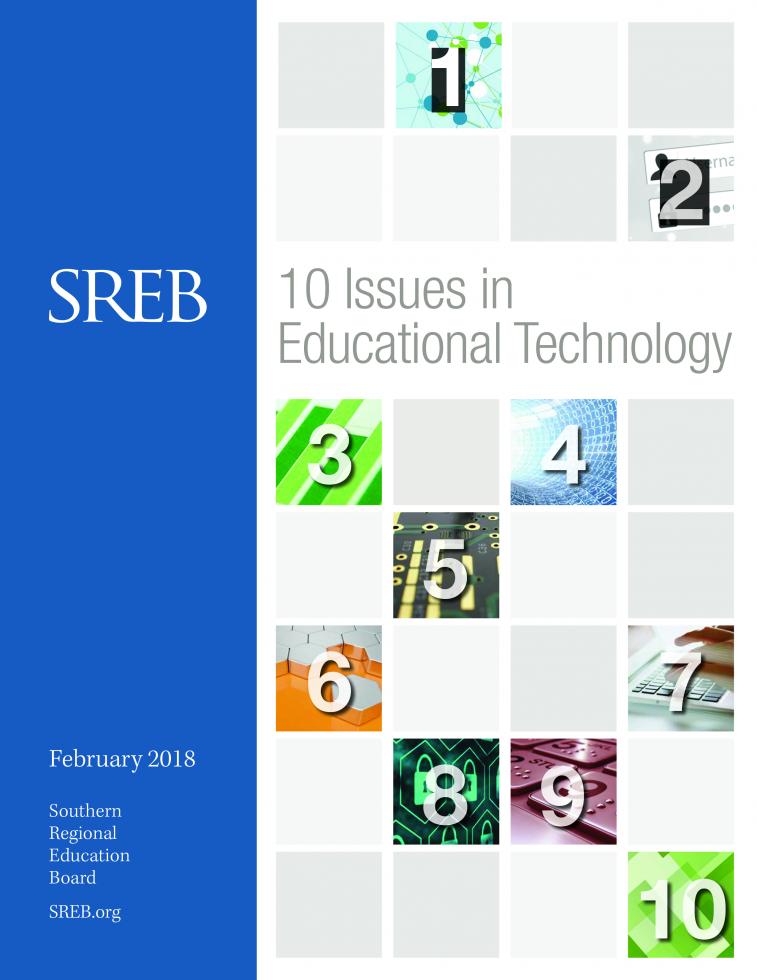10 Critical Issues in Educational Technology
To improve education, address critical technology issues now
SREB’s Educational Technology Cooperative has launched a 10 Issues in Education Technology initiative to help policymakers focus on the tech issues most critical for education across K-12 and higher ed today.
“Technology is now a fundamental consideration in education – it can’t be separated from our policies and practices to improve education,” said SREB President Dave Spence. “State leaders need reliable information about these issues and how they affect decisions about education.”
For each of the 10 topics, the project offers specific recommendations. Articles cover why each issue is important and the consequences of failing to address it. Throughout 2018, SREB will publish more detailed policy briefs, research summaries and recommended resources.
“We want to help policymakers take a closer look at these issues and find out where their states stand,” said Wanda Barker, SREB’s director of education technologies and multi-state cooperative programs. “Without adequate progress on them, states may fall short of educational improvement goals, and important policy undertakings might fail.”
Members of SREB’s Educational Technology Cooperative — ed tech leaders at state K-12 and higher education agencies — identified the issues and are working together to raise awareness and spur action on effective, practical solutions.
Data Systems
Link statewide data systems, from early childhood through college and workforce. Adopt common data definitions across state K-20 education data systems.
Data Privacy
Protect student data while enabling its use to inform education policy and practice.
Predictive Analytics
Incorporate data in decision-making and predictive modeling for better student outcomes.
Bandwidth
Expand reliable, affordable bandwidth so students and educators can benefit from current and emerging technologies.
Emerging Technologies
Factor the relevance of emerging technologies into strategic decision-making. To maximize their benefits to students, foster professional development for educators.
New Learning Models
Use technology to create personalized, competency-based learning environments that allow students to demonstrate mastery of content at their own pace.
Digital Literacy
Be sure students have the skills they need for success in a digital world.
Technology Security
Provide adequate resources to protect information and systems from unauthorized access, use, disruption or destruction, while keeping them available for learning and the business of education.
Digital Accessibility
Promote awareness, training and best practices to make e-learning more accessible to students with disabilities.
Policy
Maintain regular state-level review of technology-related legislation and policies on education standards, access and infrastructure.


